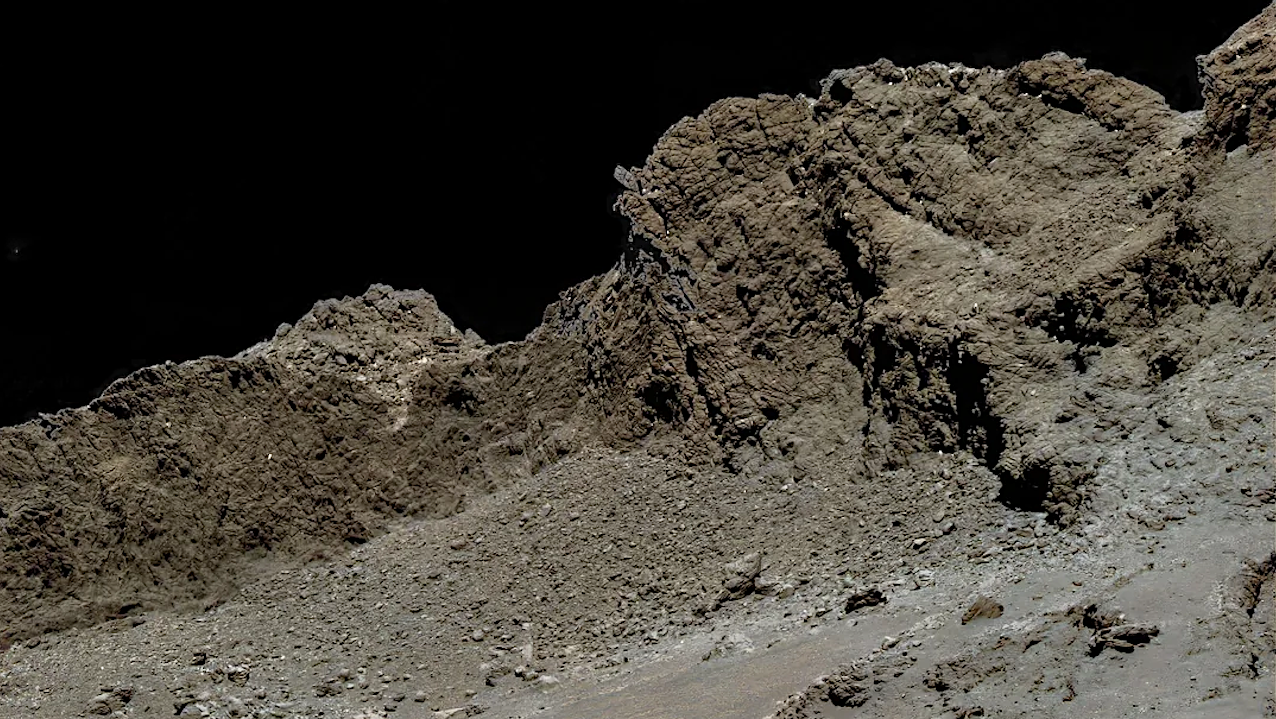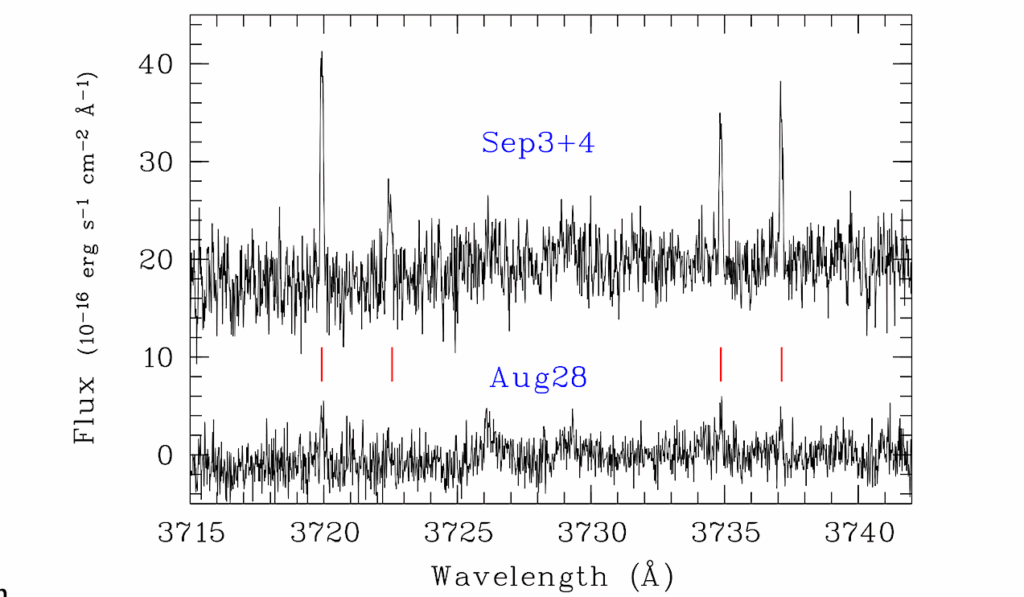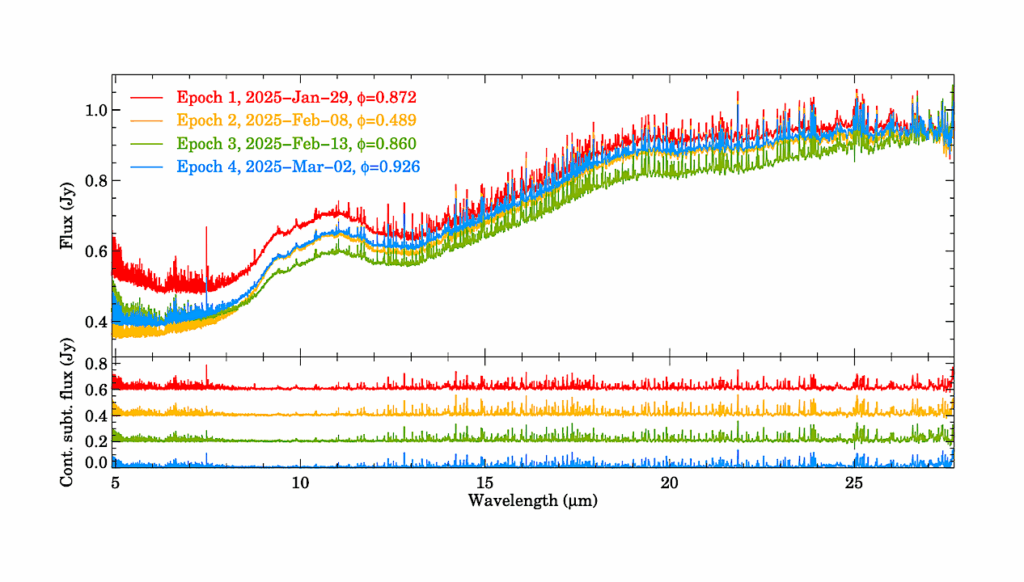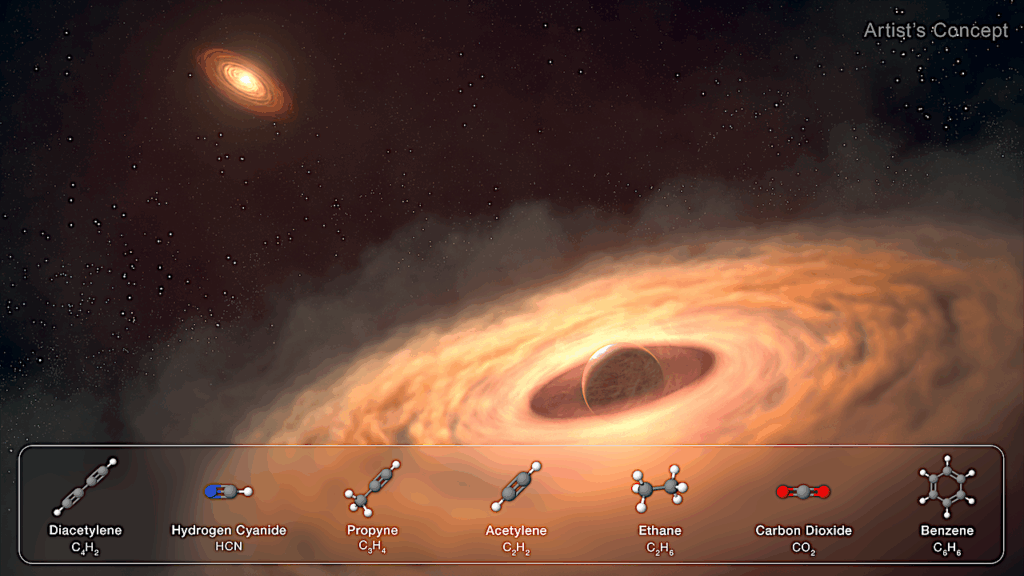Varying Water Activity and Momentum Transfer on Comet 67P/Churyumov-Gerasimenko From its non-gravitational Forces and Torques

We investigate the ability of a simultaneous fitting of comet 67P/Churyumov-Gerasimenko’s non-gravitational forces, torques and total water-outgassing rate, as observed by Rosetta, to constrain complex thermophysical models of cometary material.
We extend the previous work of fitting geographically defined surface outgassing models to the Rosetta observations by testing the effects of a more detailed geomorphological mapping, the resolution of the shape-model used, self-heating by neighbouring facets on the shape-model, thermal inertia in the outgassing solution, and variation in the momentum coupling between the gas and the nucleus.
We also directly compare the non-gravitational acceleration curves available in the literature. We correct an error in the calculation of pole-orientation in the previous paper. We find that, under the assumptions of the model: non-gravitational forces and torques are driven by water sublimation from the nucleus, thermal inertia and self-heating have only minor effects, spatially uniform activity cannot explain 67P’s non-gravitational dynamics, spatially uniform momentum transfer cannot explain 67P’s non-gravitational dynamics, and different terrain types have different instantaneous responses to insolation. Consolidated terrain facing south on 67P/Churyumov-Gerasimenko has a high outgassing flux, steep response to insolation, and large gas momentum transfer coefficient.
Meanwhile, that facing north behaves differently, producing low-to-no water outgassing, and with a lower momentum transfer efficiency. Dusty terrain also has a lower outgassing rate and momentum transfer efficiency, and either depletes its volatile component or is buried in fall-back as the comet approaches the Sun. Momentum transfer appears correlated with insolation, likely due to an increased enhancement in the gas temperature as the dust it flows through is heated.
Super-regions used in the best-fit solutions, shown with their EAF as a function of time for solution one and mapped onto the shape model with the corresponding colours. — astro-ph.EP
N. Attree, P. Gutiérrez, O. Groussin, J. Bürger, H. U. Keller, T. Kramer, R. Lasagni Manghi, M. Läuter, P. Lemos, J. Markkanen, R. Marschall, C. Schuckart
Comments: 11 pages, 8 figures, accepted for publication in A&A
Subjects: Earth and Planetary Astrophysics (astro-ph.EP)
Cite as: arXiv:2408.10877 [astro-ph.EP] (or arXiv:2408.10877v1 [astro-ph.EP] for this version)
https://doi.org/10.48550/arXiv.2408.10877
Focus to learn more
Submission history
From: Nicholas Attree
[v1] Tue, 20 Aug 2024 14:05:33 UTC (7,088 KB)
https://arxiv.org/abs/2408.10877
Astrobiology, Astrochemistry,








